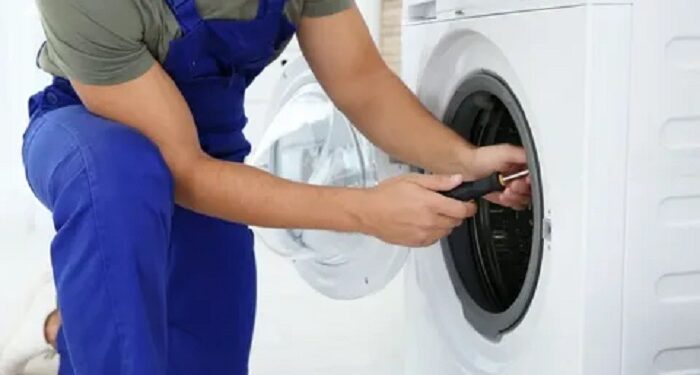A washing machine that fills and drains but won’t spin is one of the most frustrating household issues. It interrupts daily routines and often happens without warning. The good news is that most causes are mechanical or electrical faults that can be located and fixed through professional washing machine repair services quickly
Case 1: Broken Drive Belt
In one repair case, a front-load washer completed the wash cycle but failed to spin. After removing the rear panel, the technician found the drive belt lying loose. The belt had slipped off the motor pulley due to wear. A new OEM belt was installed and properly tensioned. The technician also cleaned the pulleys and checked alignment to prevent future slipping. After testing, the drum rotated smoothly again.
Case 2: Faulty Lid Switch
Top-load washers have a safety switch that prevents spinning when the lid is open. In another call, the machine appeared to stop mid-cycle with a full tub. Using a multimeter, the technician confirmed that the lid switch was not sending a signal to the control board. The switch assembly was replaced, and the washer immediately resumed spinning. Such repairs usually take less than an hour but solve the issue completely.
Case 3: Malfunctioning Motor Coupling
Some washers use a motor coupling instead of a belt to transfer motion. In a repair visit, the motor was running, but the drum didn’t move. The coupling — a small plastic and rubber part connecting the motor to the transmission — had split. After removing the old part and installing a reinforced replacement, the washer ran through a full cycle without noise or slippage.
Case 4: Control Board Failure
Occasionally, the issue is electronic. In one example, a digital washer displayed all functions normally but never entered the spin phase. Diagnostic mode revealed a communication error between the control board and motor. The technician checked voltage output and found irregular readings. Replacing the control board resolved the problem. Although such repairs are costlier, they restore full automation and extend machine life.
Case 5: Drainage Problems Causing Spin Lock
A washer won’t spin if it cannot drain properly. In one household, the pump filter was completely clogged with lint and coins. Once cleared and the drain hose flushed, the spin cycle resumed. Technicians often remind homeowners to check this filter every few months to prevent unnecessary breakdowns.
Case 6: Unbalanced Load or Shock Absorber Wear
When the washer shakes violently and stops spinning, the load may be uneven or the internal dampers worn out. In a local repair, the technician balanced the drum and inspected the suspension rods. Replacing the two worn dampers removed vibration, allowing full-speed spinning again.
Preventive Checks
Regular cleaning of filters, checking hoses, and not overloading the drum all reduce stress on the motor and transmission. These small habits keep the washer operating efficiently and prevent expensive service visits.
A washer that stops spinning rarely means it’s time for replacement. With proper diagnosis — from mechanical inspection to electronic testing — most units can be repaired quickly and continue working for years. Each case shows that identifying the real cause first is the shortest path to a working machine.











